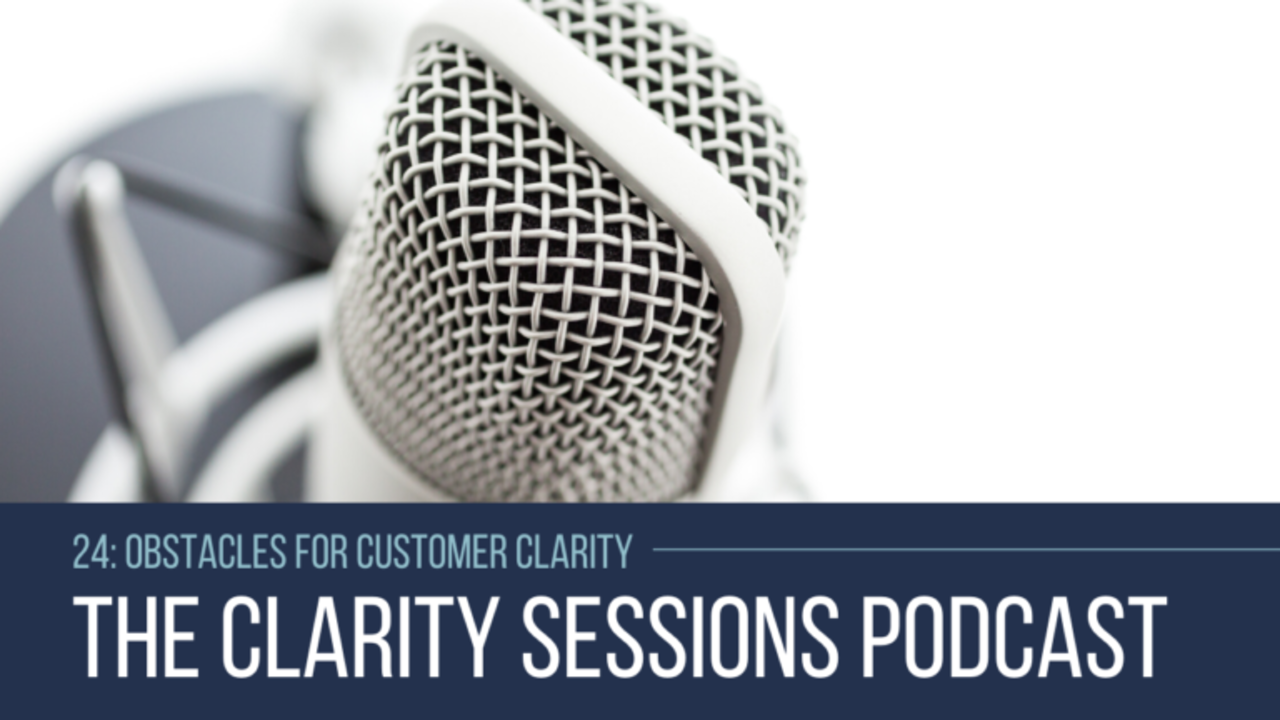#24 The Clarity Sessions Podcast – Obstacles To Customer Clarity

Clarifying your audience is such an important step that too many people miss when it comes to creating their business. I want to share with you about why it's important for you to clarify your audience and to specifically focus on that one target avatar you will serve with your products and services.
There are a few obstacles that we face when it comes to clarifying our audience. I'm going to walk you through those three obstacles that many of my coaching clients and participants in my courses face before we start to work together. If we do not clarify our customers or know exactly who we serve, then we don't know what to offer our audience or how to help them. This leads to zero sales. You might have a great idea for an online course, membership site, speech, or a book, but if you don't know who it's for, you likely won't have anyone to buy it.
So let's talk about the three obstacles that you may be facing:
1. You are thinking too broad.
So this happens often. I'm talking to somebody at a conference and I say, "Tell me about your ideal customer!" And she starts to describe someone. She says, well, she's a mom, but she might be a grandma. She's a woman, but you know, she might be a man. Now you're talking about all human people, right? She runs a business, but you know what, she might be an employee at a business or run a business. And as soon as you start adding those comments or those "ors" then you don't have customer clarity.
The first mistake is thinking too broad and trying to include everybody so you don't exclude anyone. And it sounds like it makes sense. But the problem with it is when you're creating a course and it's for everyone, it doesn't really deeply resonate with your ideal customer. So if you're going to make a homeschooling course, make a homeschooling course for first-time homeschoolers -- not for homeschoolers who have been doing it for 20-years. It's okay to go over the basics because they don't understand the basics. You might decide your course is for moms of middle school students who are homeschooling for the first time ever. They've had their kids in a traditional school, a private school, or a Christian school, but they've decided for these reasons that they want to homeschool. That's a specific person. And that changes the content that you're going to teach in that course because you have customer clarity.
2. Not understanding your customer's pain points.
What I mean specifically by that is you might be focusing on what you want to teach, not necessarily on where your audience is stuck. Great content actually solves a problem and helps people overcome their limiting beliefs or shows them something that they didn't know before that helps them to move forward. They move away from pain and towards the joy. Good teaching helps your ideal customer move from pain to pleasure. So you've got to learn to lean into your customer to figure out exactly where they are stuck and what they are struggling with.
And a great course, online membership site, speech from a stage, or book is going to be a solution to a specific problem. So when you don't know what the real problem is, you don't know what the pain point of your customer is. Your product can't help anyone if you don't know what problem it's going to solve.
3. Forgetting to validate your service or your product.
The validation process is a necessary step. But I see so many people skip over the step. Validation is where you verify that the dream you have, the thing that you want to create, is actually aligned to the goals of the person who you want to serve.
Make sure the course that you want to build is going to solve a specific problem that somebody wants to solve. People pay for the pain to go away, but you have to make sure that pain is what your audience feels. Because in reality, there's a lot of pain that we have in our life, a lot of inconveniences, but we don't care to fix it. We don't want to invest in the solution. So the key is validation. And a quick strategy to validate is to offer personal coaching. Say, "If you struggle with this, I'd love to hop on a 30-minute zoom call. I charge $47 for it, and I'd love to help you get unstuck when it comes to the specific area."
If no one signs up for it for $47, then they might not sign up for a $497 course. So validate before you create, check-in with your audience to see if they are interested. Will they at least "pay" with an email address? Will they at least sign-up for a webinar before you try to launch a big program? Will they at least pay you for a little bit of coaching before you spend months and months creating a membership site or creating an online course? Validate before you create.
Those are the three obstacles to customer clarity. If you're feeling overwhelmed right now or could use a little help in clarifying your audience, I can help in a few ways:
- Customer Clarity Course. This is a step-by-step course to help you clarify exactly who it is you serve, what are their pain points, and how do you reach them.
- If you'd like one-on-one coaching, I do have a few spots open for my clarity coaching sessions here.
Bottom line: You've got to clarify your audience if you want your business to take off, and it's time to tackle the obstacles above.
Have YOU clarified your audience?
Click here to listen to the full podcast episode.